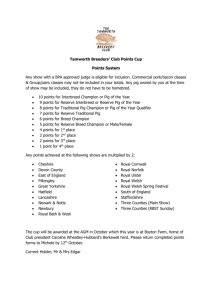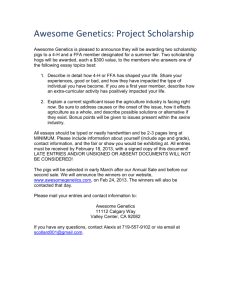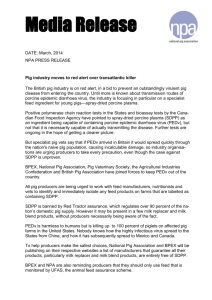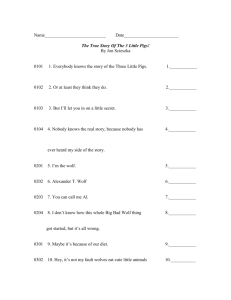Centripetal Force and the Flying Pig
advertisement
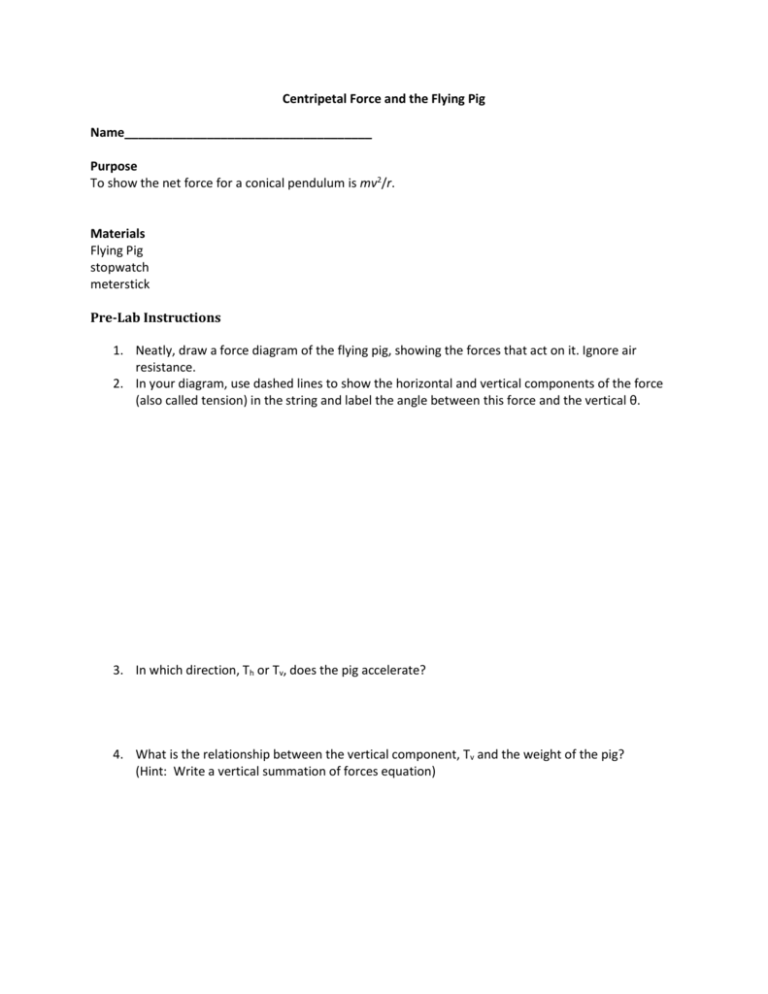
Centripetal Force and the Flying Pig Name____________________________________ Purpose To show the net force for a conical pendulum is mv2/r. Materials Flying Pig stopwatch meterstick Pre-Lab Instructions 1. Neatly, draw a force diagram of the flying pig, showing the forces that act on it. Ignore air resistance. 2. In your diagram, use dashed lines to show the horizontal and vertical components of the force (also called tension) in the string and label the angle between this force and the vertical θ. 3. In which direction, Th or Tv, does the pig accelerate? 4. What is the relationship between the vertical component, Tv and the weight of the pig? (Hint: Write a vertical summation of forces equation) Pre-lab (continued) 5. Write an equation that relates the centripetal force to the horizontal force. Hint: 𝑚𝑣 2 𝑟 =? 6. You now have two equations. Use the definition of Th and the definition of Tv combined with the two equations from above to get ONE equation, then solve your equation for v. (I don’t want a numerical value here – I want an equation! Lab Procedure Determination of the flight angle 7. Hold the pig by its body, so that the string is about 30° from the vertical. Turn on the motor then give the pig a slight shove in the direction that is tangent to the circle where it will fly. The pig should settle into a circle within about 10 seconds, if it does not, carefully catch the pig and try launching it again. WARNING: TRY TO AVOID TOUCHING THE MOVING WINGS OF THE PIG! 8. When the pig is flying in a consistent circle, measure the radius of the circle, r and record it. 9. Record the length of the string. 10. Using the diagram at right as a guide, determine the angle, θ, and record. Data/Calculations Table 1 Radius of the Length of the Circle (Meters) String (meters) Calculation (show how you can get θ from R and L) Θ (in degrees) L θ r Determination of Actual Speed 11. Time 10 rotations and record the value in Table II. 12. Divide the time by 10 to get the period of 1 rotation. Record this value in Table II. 2𝜋𝑟 13. Finally, use the equation 𝑣 = 𝑇 to calculate the actual velocity of the pig. (Show work below and record your value in Table II) Determination of the theoretical velocity 14. Use the equation from step 6 to calculate the theoretical velocity of the pig. (Show work, and record this value in Table II) Error Analysis 15. Calculate your percent error using the equation: % = │𝑇ℎ𝑒𝑜𝑟𝑒𝑡𝑖𝑐𝑎𝑙−𝑎𝑐𝑡𝑢𝑎𝑙│ 𝑇ℎ𝑒𝑜𝑟𝑒𝑡𝑖𝑐𝑎𝑙 𝑥 100 (show work) Data/Calculations Table II Time for 10 revolutions (seconds) Period of 1 Revolution (T) (seconds) Actual Velocity (m/s) Theoretical Velocity (m/s) If your error is greater than 10%, list three possible sources of error for this lab: 1. _________________________________________________________________ 2. __________________________________________________________________ 3. __________________________________________________________________ % Error


